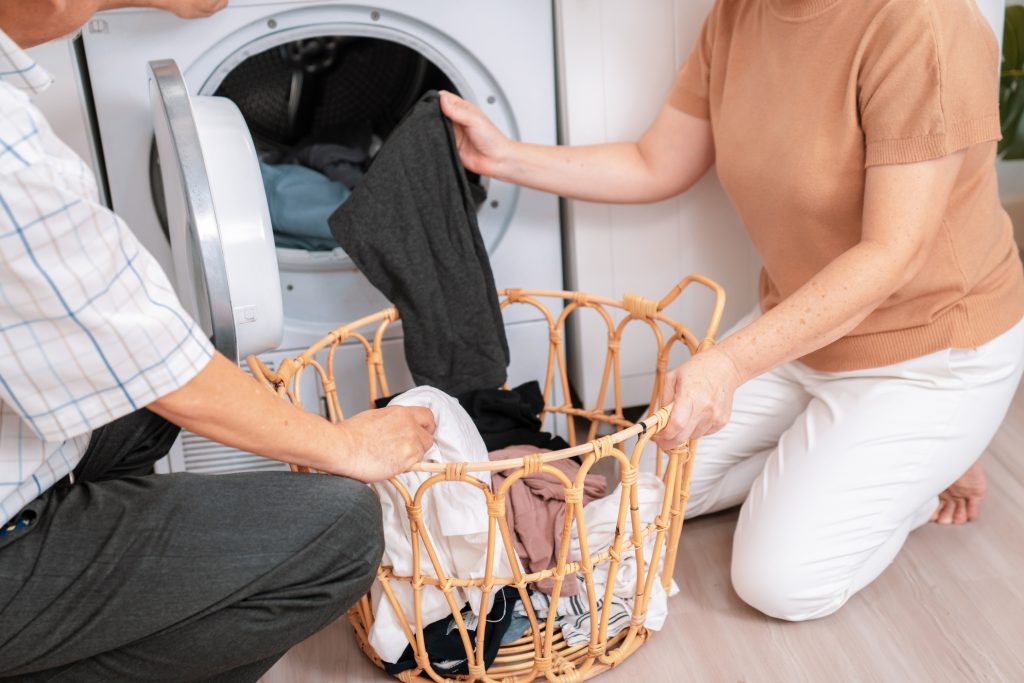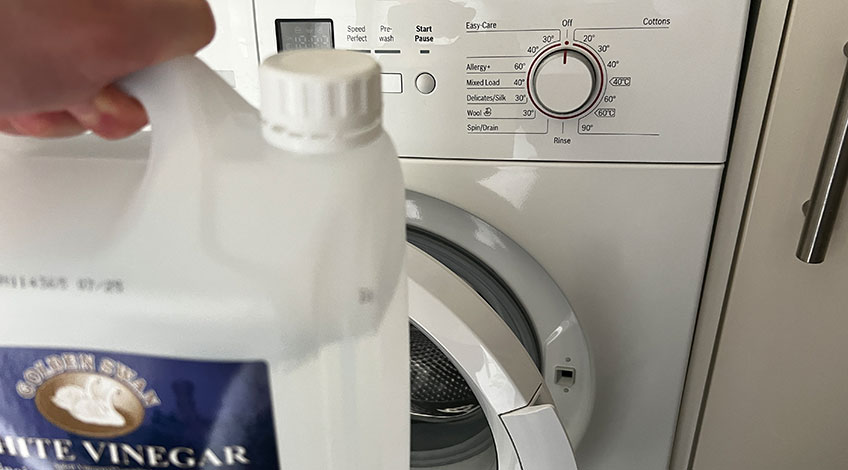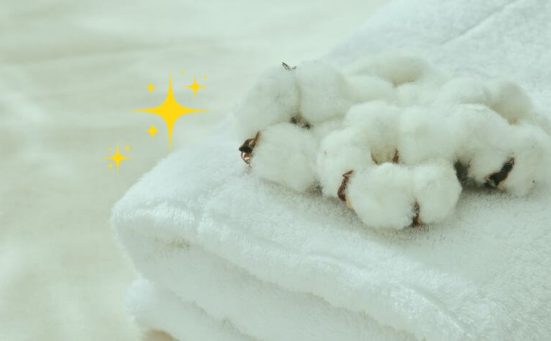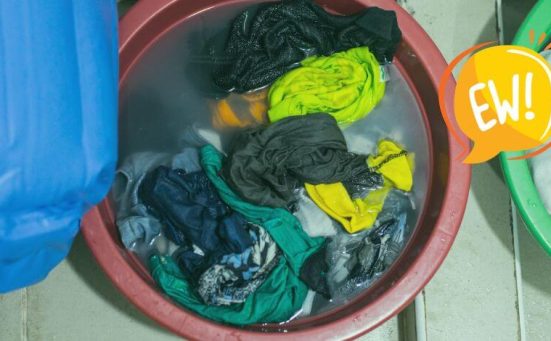
Foam In Washing Machine? Too Many Suds? (do this)
Too much foam in your washing machine can stop your clothes from getting properly clean and might leave detergent residue behind. This usually happens if you use too much detergent or don’t consider how hard your water is.
But how do you solve the problem of too many soap suds in your washing machine? In this article, we’ll show you easy steps to remove excess foam and make your clothes cleaner.
Keep reading to find out how changing the amount of detergent you use and regularly looking after your machine can stop too much foam and give you the best wash.
Why Is Too Much Foam In My Washing Machine A Problem?

Seeing soap suds or foam in washing machines can seem like a good sign, suggesting that the clothes are thoroughly soaked in detergent and will be extra clean, right? However, the reality might surprise you. While a moderate amount of suds is beneficial, too much can actually be problematic.
Too many soap suds can prevent your wash from getting clean.
Soap suds form as a natural reaction of detergents and water being agitated during the normal wash cycle of a washing machine. They are used to wash the laundry and then get rinsed away during the rinse cycle. But too many soap suds can prevent the laundry from getting clean.
How Does Too Much Foam Prevent The Laundry From Getting Clean?
Washing machines clean clothes by mimicking traditional hand-washing methods. Clothes are agitated in a mixture of soap and water within the machine’s drum, which replicates the action of manually rubbing dirty clothes together.
The problem is, too many soap suds prevent clothes from rubbing together effectively during washing, leading to poorly cleaned clothes. Additionally, excessive soap overwhelms the machine’s rinsing action, causing clothes to retain detergent residue after washing.
This then leads to problems drying the clothes (they take longer due to the soap content) and the concentrated soap suds can leave behind a not too pleasant smell. All of which means the clothes need to be re-washed before you can wear them again.
What Else Can Too Much Foam In The Wash Do?
In extreme cases, having too many soap suds in the washing machine can cause them to leak out of the machine and make a huge mess of your kitchen, laundry or utility room.
Why Are There Too Many Soap Suds In The Washing Machine?
There are several reasons why the washing machine can produce too many soap suds or foam. Let’s have a look at the causes of excess foam in the washing machine;
| Possible Cause | Solution |
|---|---|
| Too Much Detergent | Use the correct amount based on water hardness; consider detergent pods. |
| Soft Water | Reduce detergent use compared to hard water areas. |
| Too Little Detergent | Ensure adequate detergent use to maintain anti-foam balance. |
| Overloading Washing Machine | Avoid overloading to ensure proper cleaning and rinsing. |
| Buildup of Detergent | Regularly measure detergent use and perform maintenance cleaning. |
| Using Anti-Limescale Products | Adjust the detergent amount when using these products. |
| Water Softener System | Adjust detergent levels for the softened water conditions. |
Too Much Detergent

The most common cause of excess soap suds is using too much detergent in your washing machine. Always check the detergent label and use the correct amount based on your water hardness.
Consider switching to pre-dosed detergent pods if managing detergent dosage in your washing machine is difficult. These pods provide the exact amount of detergent needed for a standard wash, preventing excessive foam in your machine.
If you are using the correct amount of detergent and you find the washing machine is getting too many soap suds, check the hardness of the water in your area.
Soft Water
If you live in an area which has soft water you will need to use far less detergent than you would in an area with hard water. To check the hardness of the water in your area click here to contact your local water company.
Too Little Detergent
We know this sounds a little out there, but it’s true, you see detergents contain an anti-foam agent. This means that not using enough detergent could cause the soap suds to create too much foam because there is less anti-foam in the washing machine.
It is always vitally important to use the correct amount of detergent in every wash.
Overloading Your Washing Machine

If you overload your machine with too much laundry, you will reduce the machine’s ability to clean and rinse the clothes. This means it will struggle to remove all of the soap suds.
Buildup Of Detergent
Regularly using too much detergent in your washing machine can lead to the machine accumulating trace amounts of detergent. This can buildup to the point where the machine creates too many suds which is then added to every time you use the machine.
It is important to always use the correct amount of detergent in every wash.
Using Anti-Limescale Products
You will need less detergent if you add anti-limescale products to protect your washing machine from limescale damage.
Anti-limescale products like Calgon or soda crystals effectively change the hardness of the water from hard to soft. They do this by negating the minerals which naturally occur in the water that cause the water to be considered hard – or are most likely to create limescale.
When adding an anti-limescale product to your washing machine, adjust your detergent for soft water conditions. Using the correct amount of detergent, even in hard water areas, protects your machine against limescale because detergents contain an ingredient that prevents limescale buildup.
Water Softener System
If your home has a water softener system or similar, you’ll need to adjust your detergent levels accordingly. Soft water always needs less detergent than hard water. So even if you live in a hard water area, but have some sort of water softening system, you’ll only need the amount of detergent required in soft water areas.
How To Remove Excess Foam From Your Washing Machine

We have found that fabric softener can be effective against an excess of soap suds in your washing machine. Try pouring fabric softener into the machine at the start of the rinse cycle. Repeat if necessary and never use fabric softener when the machine is not rinsing as it could damage your clothes if applied neat to clothes.
If you do still get foam in your washer, it’s essential to clean it regularly, as it could be caused by a buildup of detergent (as I explained earlier), which can then turn into mould and musty odours if left untreated.
Simply, remove any excess foam and wipe down the interior, focusing on soap residue and moisture build-up.
Too Many Soap Suds Only During The Rinse And Spin Cycles
If soap suds appear only during the rinse and spin cycles, there might be a partial blockage preventing water from draining at the proper rate. This blockage could cause an accumulation of suds from the wash cycle to remain in the machine, reactivating during later rinse and spin cycles.
This isn’t a common occurrence and needs the blockage to be small enough so that some water can escape and yet large enough to prevent enough soap foam from leaving the machine.
These sorts of conditions are almost always caused by a partial blockage to the pump filter.
How To Check The Pump Filter On A Washing Machine
To check the pump filter simply;
- Locate The Pump Filter
The pump filter is usually located at the front of the machine at the bottom, behind a flap. Simply lift or pull down the flap to expose the pump filter. - Lay A Towel On The Floor
Place a towel on the floor in front of the filter to absorb any water that drips from the filter once it is opened. If your machine is full or partially full of water, place a bowl on the floor to catch this water and regulate the water flow by replacing the filter once the bowl is full. Continue refilling the bowl from the filter until the water is gone from the machine. - Twist The Filter From The Pump
The filter should turn anti-clockwise to remove it from the pump. - Check The Filter
Once the filter is removed from the pump, check it for any foreign bodies, likely candidates are screws, nails, lint, coins or anything else which could have fallen from the pockets of your washing into the machine. - Check The Pump’s Impeller
Whilst the filter is removed, check the impeller inside the pump by gently spinning it using one finger. If the impeller moves freely, the pump should be working fine. - Wash The Filter
Once any foreign objects have been removed from the filter, Rinse it under running water until it is clean. - Replace the filter
To return the filter into the pump, gently push the filter into the housing and turn it clockwise to lock it into position. Take care to not over tighten the screw as this could cause it to leak.
Check The Waste Pipe
If the filter is clear, you should inspect the waste pipe, it could be twisted just enough to cause the conditions mentioned above. Another thing to check is how far into the plastic wall pipe the waste pipe extends. It should extend into the wall pipe no greater than 6 inches (15cm). Any further and insufficient drainage could occur.
Use Vinegar To Prevent Detergent Buildup

The problem of excessive soap suds could also be caused by a buildup of detergent in your clothes and especially your towels. To prevent this buildup, add a cup of white vinegar to the rinse cycle instead of a fabric conditioner (which does a similar thing).
SEE ALSO:
- Easy Way To Clean A Washing Machine Drawer Using Vinegar
- Where Do You Put Vinegar In A Front Loading Washing Machine?
Frequently Asked Questions
There are several reasons your washing machine could be making too many suds. These include, using too much detergent, especially if you live in an area with soft water, using anti-limescale products in your wash, overloading your washing machine or a partially blocked pump filter.
If your washing machine has created too much foam the best way to get rid of it is to add fabric softener to the rinse cycle. Or add white vinegar to the rinse cycle.
It is normal to see some soap suds in the washing machine. However, if you see what you consider to be an excessive amount of soap suds in the washing machine, you should check on the amount of detergent you are using.
Using white vinegar will help to reduce soap suds in the washing machine. Add one cup of white vinegar to the machine at the start of the rinse cycle to reduce soap suds.
If you notice too much foam when washing towels, it’s likely due to using too much detergent. Towels, being highly absorbent, can retain soap, leading to more foam. Adjust the detergent amount according to the hardness of your water and the load size, ensuring you’re not overloading the washing machine. Regular use of white vinegar in the rinse cycle can also help manage and reduce foam buildup.
Also, follow us on Pinterest ...



